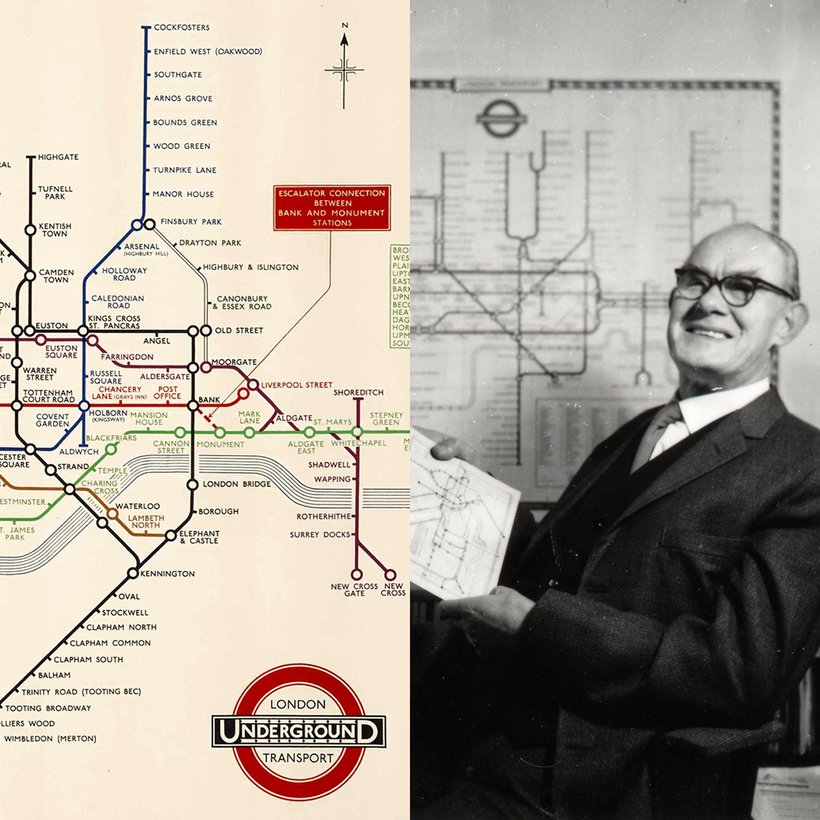The classic design has guided travelers for almost a century. But the designer of the London Underground map was paid just £5 and five shillings ($25) for his work, a receipt reveals.
The paltry sum given to Harry Beck, who devised the map in the early 1930s, is the equivalent of about £300 ($393) in today’s money.
Beck, who was made redundant by London Underground Signals Office in 1929, was working as a freelancer when he drew his modernist map. He was an engineer by training, so was intent on a practical look — with its echoes of an electrical circuit — to replace what was a tangled, “spaghetti-like” map.
His design has won numerous plaudits, including being voted the second best British design of the 20th century in a major BBC poll in 2006, beaten only by Concorde.

But a copy of an invoice for his map given by Beck to a friend shows that he received only £5 and five shillings ($25) from the London Passenger Transport Board for the “preparation of a quad royal Underground map”. Quad royal is a poster size of roughly 1.2 meters by a 1 meter (50 x 40 ins).
The story of Beck and his tussles with London Transport (LT) will be told in a play, The Truth About Harry Beck, opening in mid-September in a new theater space, the Cubic Room, at the London Transport Museum in Covent Garden.
Andy Burden, the writer and director of the play, spoke to Ken Garland, the designer of the Campaign for Nuclear Disarmament emblem, about his close friend Beck before his death in 2021. Garland also gave Burden letters and invoices from Beck, who died in 1974, including the advertising order invoice for his 1931 map design.

Garland also showed the playwright a letter from LT’s chief executive, Frank Pick, to Beck following his resubmitted 1933 map. “I confess that, on a large scale, it looks very convenient and tidy. It is better than any we have had so far,” wrote Pick.
The play features Harry (Simon Snashall) and his wife Nora (Ashley Christmas), who look back at Beck’s career. “Nora, I’ve discovered, was quite wealthy and hugely supportive of Harry,” Burden said.
Beck joined the staff of London Underground in 1934 and remained there until he fell out with his employer in the late 1950s. In those 25 years he amended the map and expanded it to include the most western and northerly parts of the District and Metropolitan lines.

But he had a major dispute in 1959 with LT’s head of publicity, Harold Hutchison, over fitting the planned Victoria Line on the map. “Beck wrote that Hutchinson’s design looked too spiky and angular,” said Burden. So Beck, who had his own ideas turned down, quit. He then fought for five years over the map’s copyright. “Harry argued it was his,” says Burden, who has seen letters between Beck and LT. “But he never got a lawyer. He wasn’t fighting over money, but recognition.”
In 2002, LT finally agreed that the Tube map would include the wording: “This diagram is an evolution of the original design conceived in 1931 by Harry Beck.” The belated acknowledgement can be seen in the bottom left corner of today’s version.
Richard Brooks is a writer and editor at The Times of London specializing in arts and culture

